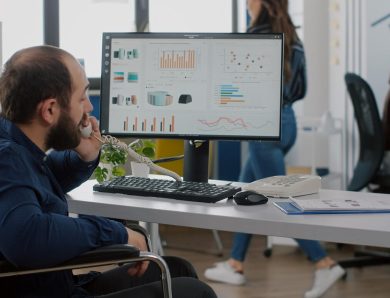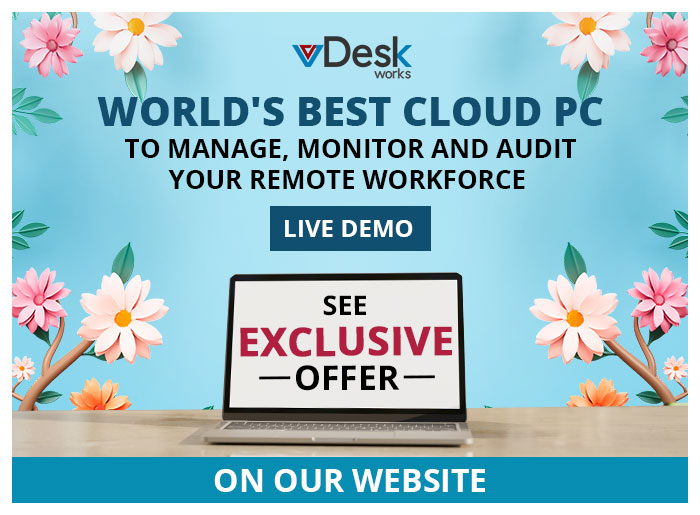
Work Smarter, Not Harder: Leveraging Employee Monitoring to Drive Productivity
In the rapidly evolving business landscape, organizations are constantly searching for ways to optimize performance and enhance productivity. The pressure to meet targets while maintaining high-quality standards can sometimes result in long hours and stressed employees. However, working harder isn’t always the solution. A smarter approach involves leveraging technology to monitor and optimize workflows, helping businesses make data-driven decisions. One such solution is employee monitoring systems.
Employee monitoring has come a long way, evolving from simple time tracking to comprehensive platforms that provide insights into employee behavior, performance, and overall productivity. Let’s explore how these systems can help businesses work smarter, not harder, and the benefits they bring to modern workplaces.
What is Employee Monitoring?
Employee monitoring refers to the use of software tools and systems that track employees’ activities, productivity levels, and engagement throughout the workday. These systems collect data on a range of behaviors, from how long an employee spends on specific tasks to the applications they use most frequently. The goal is not to micromanage but to gather insights that can improve overall business operations.
How Employee Monitoring Drives Productivity
- Data-Driven Decision Making One of the key benefits of employee monitoring systems is the ability to access real-time data. Managers no longer need to rely on subjective reports or manual tracking to understand how employees are spending their time. Instead, they can utilize data dashboards that highlight bottlenecks, unproductive patterns, and time spent on high-priority versus low-priority tasks. This data enables leaders to make informed decisions that boost efficiency and productivity.
- Optimizing Workflows Employee monitoring software can identify areas where work processes are inefficient. For example, if certain tasks are taking longer than expected, managers can investigate the root cause and implement corrective measures. It could be that employees lack adequate resources or training, or that the workflow itself is cumbersome. By identifying these gaps early, businesses can streamline their processes, allowing employees to work smarter and focus on higher-impact tasks.
- Fostering Accountability Monitoring systems also promote accountability among employees. Knowing that their activities are being tracked in a non-intrusive way encourages employees to stay on task and focus on their work. With features such as time tracking, screenshot capturing, and activity logs, employees are more aware of how they manage their time, leading to improved focus and discipline.
- Reducing Unproductive Time Employee monitoring tools can help minimize distractions, particularly in remote work environments. With the rise of remote and hybrid work setups, it’s easier than ever for employees to get sidetracked. Monitoring software can flag time spent on non-work-related activities, enabling managers to have meaningful conversations with employees about productivity. By identifying these distractions early, businesses can implement strategies to reduce unproductive time, ensuring employees stay on track.
- Enhancing Resource Allocation Understanding how employees spend their time also enables better resource allocation. If certain teams or individuals are consistently overwhelmed with tasks, managers can redistribute workloads more effectively. This not only prevents burnout but also ensures that each team member is working to their full potential without being overburdened.
- Improving Employee Performance Employee monitoring isn’t just about tracking; it’s also a tool for growth. The insights gained from monitoring systems can be used to provide constructive feedback to employees, highlighting areas of strength and areas for improvement. Regular performance reviews, backed by objective data, allow employees to understand their productivity trends and adjust their behaviors accordingly. Over time, this leads to a more motivated, engaged, and productive workforce.
- Facilitating Remote Workforce Management With the increasing popularity of remote work, managing a distributed workforce can be challenging. Employee monitoring systems offer transparency into remote employee performance, ensuring that they remain productive regardless of their location. Managers can monitor the progress of remote workers, track their tasks, and offer support where needed without the need for constant check-ins or micromanagement.
Balancing Monitoring with Employee Trust
It’s important to note that employee monitoring must be implemented carefully. When done transparently, it can foster a sense of trust and mutual accountability between employers and employees. However, if monitoring is perceived as overly intrusive or punitive, it can have the opposite effect, leading to reduced morale and engagement. To strike the right balance:
- Be Transparent: Clearly communicate with employees about what is being monitored, why it’s being done, and how the data will be used. Transparency fosters trust and helps employees understand that the goal is to enhance productivity, not to spy on them.
- Focus on Outcomes: Rather than emphasizing every minute of the workday, focus on the bigger picture. The goal of monitoring should be to improve overall business outcomes, not to scrutinize every action.
- Encourage Feedback: Invite employees to share their thoughts on the monitoring system. This creates an open dialogue and shows that their input is valued, which can help ease concerns about privacy.
Choosing the Right Employee Monitoring System
When selecting an employee monitoring system, it’s important to choose a solution that aligns with your organization’s needs and culture. Some key features to consider include:
- Time Tracking: Automated time tracking to ensure accurate records of time spent on tasks.
- Task Management: Integration with task management tools to monitor progress and deadlines.
- Application Tracking: Insight into which applications employees use most frequently during work hours.
- Screenshots & Activity Logs: Capture employee activity to verify work is being done effectively.
- Privacy Settings: Customizable settings to ensure that monitoring is done in compliance with privacy regulations and company policies.
Conclusion
Leveraging employee monitoring systems is a powerful way to boost productivity, streamline operations, and foster a more efficient workplace. By providing actionable insights into employee behavior and performance, businesses can make smarter decisions, allocate resources more effectively, and ensure that their teams are working at their full potential. Remember, the goal is not to track for the sake of control, but to create a data-driven environment where employees can thrive and organizations can achieve long-term success.
In a world where efficiency is paramount, employee monitoring offers the tools to help businesses and employees work smarter, not harder.






No Comment